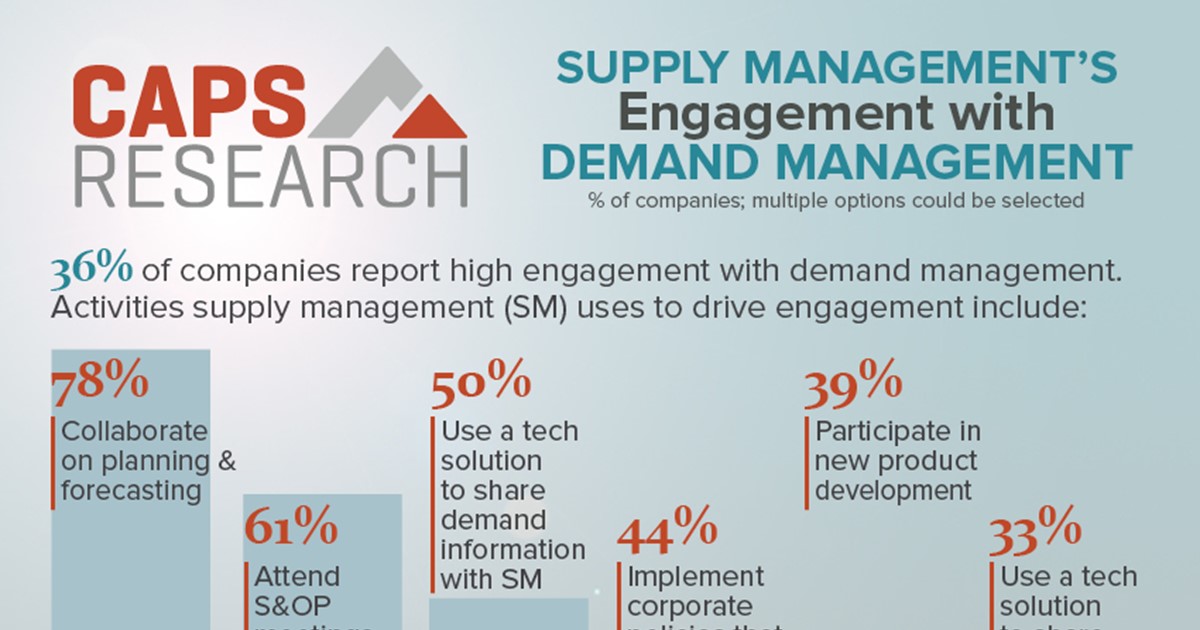Engaging supply management with internal business partners has the protentional to create value and alignment with business goals. What methods does your group use to engage internal business partners?
Demand Uncertainty
Supply management aims to maximize value, making supply meet demand amidst uncertain circumstances – demand management. What actions are large corporations taking to help balance uncertainty in their supply chains?
SM's Engagement with Demand Management
36% of companies report high engagement with demand management. We explore activities that supply management uses to drive engagement.
Business Partner Engagement
Aligning and integrating with the business can help supply management leaders drive value for their companies, especially at a strategic level.
Taking Action to Balance Finances
Companies are tightening the purse strings in response to the pandemic and world events, with 75% restricting discretionary spending.
The Profile of an Ideal Category Manager
In a recent CAPS research report, 33% of companies said it's challenging to find the right talent. These are the skills and capabilities they think are important for a category manager.
SM After the Pandemic
10% of all companies are executing post-pandemic plans while 81% are still in various stages of active planning
Pandemic and Personnel
53% of companies surveyed are implementing a hiring freeze due to the pandemic.
Sourcing PPE
40% of companies say increased demand for PPE is still their single greatest challenge.
Virtual Teams
42% of companies host virtual social meetings like happy hours to create an effective space for virtual teams.
Non-members can receive the report of each survey they submit.
Members can access all reports, but are encouraged to submit surveys to
increase the comparative breakouts only they receive.









